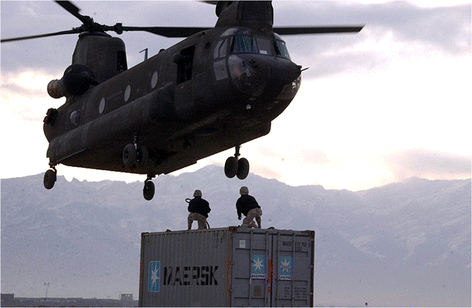Unpredictable, unpreventable and impersonal medicine: global disaster response in the 21st century
- PMID: 25663953
- PMCID: PMC4320615
- DOI: 10.1186/s13167-014-0024-9
Unpredictable, unpreventable and impersonal medicine: global disaster response in the 21st century
Abstract
The United Nations has recognized the devastating consequences of "unpredictable, unpreventable and impersonal" disasters-at least US $2 trillion in economic damage and more than 1.3 million lives lost from natural disasters in the last two decades alone. In many disasters (both natural and man-made) hundreds-and in major earthquakes, thousands-of lives are lost in the first days following the event because of the lack of medical/surgical facilities to treat those with potentially survivable injuries. Disasters disrupt and destroy not only medical facilities in the disaster zone but also infrastructure (roads, airports, electricity) and potentially local healthcare personnel as well. To minimize morbidity and mortality from disasters, medical treatment must begin immediately, within minutes ideally, but certainly within 24 h (not the days to weeks currently seen in medical response to disasters). This requires that all resources-medical equipment and support, and healthcare personnel-be portable and readily available; transport to the disaster site will usually require helicopters, as military medical response teams in developed countries have demonstrated. Some of the resources available and in development for immediate medical response for disasters-from portable CT scanners to telesurgical capabilities-are described. For immediate deployment, these resources-medical equipment and personnel-must be ready for deployment on a moment's notice and not require administrative approvals or bureaucratic authorizations from numerous national and international agencies, as is presently the case. Following the "trauma center/stroke center" model, disaster response incorporating "disaster response centers" would be seamlessly integrated into the ongoing daily healthcare delivery systems worldwide, from medical education and specialty training (resident/registrar) to acute and subacute intensive care to long-term rehabilitation. The benefits of such a global disaster response network extend far beyond the lives saved: universal standards for medical education and healthcare delivery, as well as the global development of medical equipment and infrastructure, would follow. Capitalizing on the humanitarian nature of disaster response-with its suspension of the cultural, socioeconomic and political barriers that often paralyze international cooperation and development-disaster response can be predictable, loss of life can be preventable and benefits can be both personal and societal.
Keywords: Disaster response; Emergency response; Global health care; International medicine; Medical evacuation; Mobile hospitals; Predictive preventive personalized medicine; Telemedicine; Trauma.
Figures






References
-
- US Geological Survey: Earthquake facts and statistics. Available from: http://earthquake.usgs.gov/earthquakes/. Accessed November 15, 2014.
-
- Wikipedia: List of natural disasters by death toll. Available from: http://en.wikipedia.org/wiki/List_of_natural_disasters_by_death_toll. Accessed November 15, 2014.
-
- UNISDR + WMO: Disaster risk and resilience – thematic think piece. UN System Task Team on the Post-2015 UN Development Agenda, May, 2012. Available from: http://www.unisdr.org. Accessed September 5, 2014.
-
- United Nations: Implementation of the international strategy for disaster reduction: report of the Secretary-General. United Nations General Assembly, August 14, 2013.
-
- Nations U. World Conference on Disaster Risk Reduction: Proceedings of the Conference, UN/ISDR. 2005.
LinkOut - more resources
Full Text Sources
Other Literature Sources

